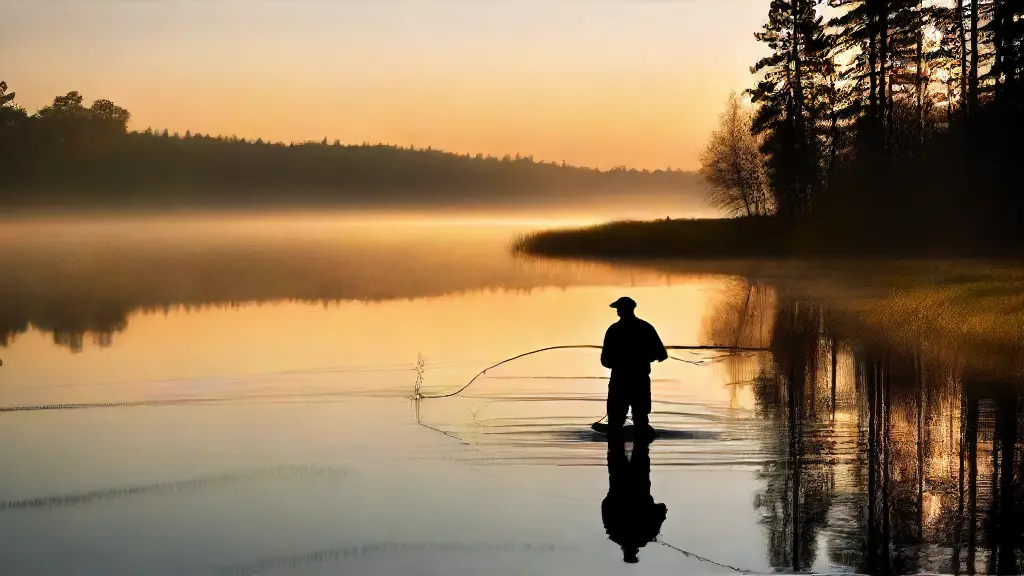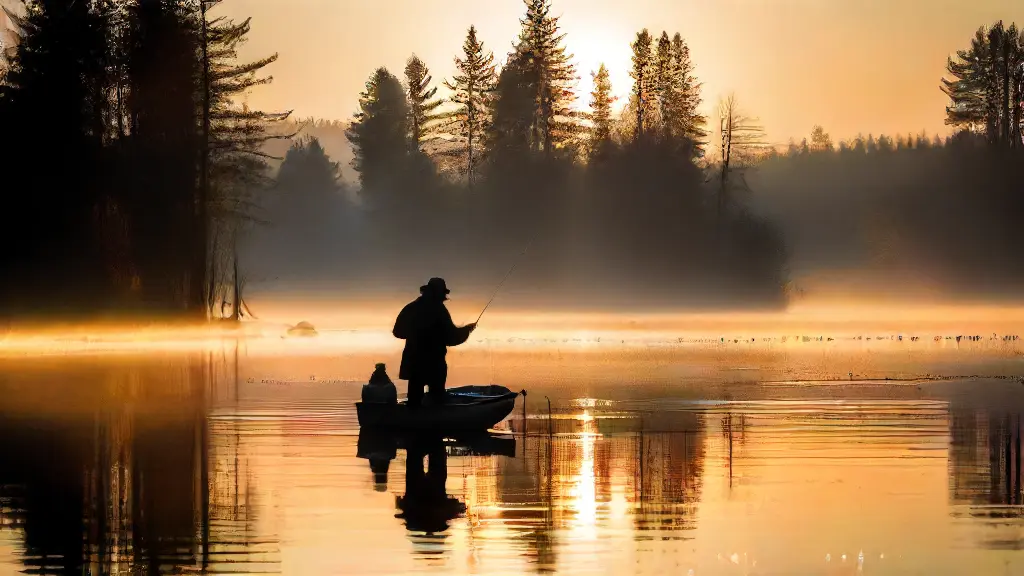Slip Bobbers for Fishing in Shallow Water

Catching fish in shallow water is a thrilling experience, and with the right techniques and equipment, even beginners can reap the rewards. The subtleties of shallow water fishing require a thoughtful approach, as the gentle currents and soft bottoms demand a gentle touch.
Fishing for Trout in Shallow Waters with Slip Bobbers
Fishing for trout in shallow waters with slip bobbers requires a combination of patience, skill, and the right equipment.
Slip bobbers are a type of fishing float that allows you to suspend your bait or lure at a specific depth, making it ideal for shallow water fishing.
What You Need to Know
Fishing in shallow waters requires a different approach than fishing in deeper waters.
Why Slip Bobbers Work in Shallow Water
In the realm of fishing, a delicate balance between precision and strategy is essential for success. Few tools embody this balance better than slip bobbers, which have revolutionized the way anglers approach shallow waters.
Fish behavior is more predictable in shallower waters.
Slip bobbers work wonders in shallow water thanks to their unique design, which allows for precise depth control.
This feature is particularly important in shallower waters, where light line fishing offers unparalleled sensitivity for detecting even the slightest bites. By carefully adjusting the bobber’s depth, anglers can place their bait at the exact spot where fish are most likely to find it.
A subtle approach is often necessary in shallower waters, where water clarity is crucial. Panfishing techniques demand precision, and slip bobbers deliver with their ability to float just above the weeds. Clearer water may require smaller lures and more precise presentations.

How to Select the Right Bobber
The thrill of reeling in a catch from the depths of a tranquil pond is unmatched, but it’s only possible with the right equipment in hand. One crucial aspect of freshwater fishing is selecting the right bobber, which can make all the difference between a successful catch and a disappointing outing.
When it comes to shallow water fishing, choosing the right bobber is crucial, and it’s not just about selecting any old bobber that catches your eye.
Different types of bobbers serve specific purposes, from floatation devices to indicators of fish activity.
I. Factors to Consider
Water depth and current are critical factors to consider when selecting the right bobber.
Deeper waters require more substantial bobbers to anchor the line securely, while strong currents demand bobbers with buoyancy to stay afloat. Bait type and size also play a significant role in bobber selection, as the presentation must be tailored to the specific fishing method.
What Are Good Bobber Materials
As we venture into the world of shallow water fishing, one crucial aspect often goes unnoticed – the choice of bobber material. Whether using lures to entice big catches or relying on soft plastics to reel in the small ones, a well-suited bobber can be the difference between a successful day on the water and a skunked trip.
Selecting the right material can be overwhelming, especially with the numerous options available.
This is because different materials possess unique characteristics that can affect fishing performance.
We will explore the importance of choosing the right bobber material for shallow water fishing, and examine the various natural, synthetic, and hybrid materials available.
II. A natural, flexible, and quiet presentation that can be used on any type of fishing water.
How to Choose the Perfect Floatation
As you prepare for your next fishing adventure, it’s essential to consider the type of floatation that will complement your fishing style and environment.
Consider the Depth and Water Clarity
Depth and water clarity are two crucial factors to consider when choosing the perfect floatation.
Pay attention to the depth of your fishing spot, as different depths require different types of floatations.
Depth-Specific Floatations
Shallow water typically requires smaller, lighter floatations, ranging from 1-2 inches, which provide good sensitivity and are ideal for fishing with spinning devices.
In contrast, deeper waters necessitate larger, heavier floatations that can withstand the pressure.
Floating Material Selection
The type of floating material to choose depends on the fish species and fishing technique. Foam floats are best suited for shallow water and provide good sensitivity, allowing anglers to detect even the lightest of bites when using Jigs.
Bobber Fishing Techniques for Success
Fishing with a hint of anticipation, many anglers seek to master the art of bobber fishing, a technique that requires a delicate balance of patience and strategy.
Choosing the Right Bobber
When it comes to selecting a bobber, material and size are crucial factors to consider.
Crickets aside, plastic bobbers are ideal for beginners, while metal bobbers are better suited for more experienced anglers.
Foam bobbers, on the other hand, are perfect for fishing in shallow waters where leeches are abundant.
Factors to Consider When Selecting a Bobber Size
When choosing the right bobber size, consider the type of fish you’re targeting and the water conditions. For example, smaller bobbers are suitable for Corn-sized fish, while larger ones are better suited for Leeches or Nightcrawlers.
How to Manage Your Tackle Box
Fishing has been a beloved pastime for centuries, offering a unique combination of adventure, relaxation, and connection with nature. With the right tools and techniques, anglers can enhance their experience and increase their chances of landing a big catch.
Fishing enthusiasts often face a daunting task when it comes to managing their tackle box, but with a little organization and planning, it’s easier than you think.
Fishing electronics like fish finders and GPS can be a game-changer in tracking your lure and line, making it simpler to stay organized while on the water.
A well-organized tackle box is crucial for success, as it allows you to quickly find the right lure or gear in a given situation. This not only saves time but also reduces the likelihood of losing valuable equipment. One effective way to organize your tackle box is by grouping lures by type, such as soft plastics, spoons, and jigs, or by fishing technique, such as topwater, bottom fishing, and trolling.
Fishing Tips and Techniques
- Fishing has been a beloved pastime for centuries, offering a unique combination of adventure, relaxation, and connection with nature.
- Fishing electronics like fish finders and GPS can help anglers track their lure and line, making it simpler to stay organized while on the water.
- A well-organized tackle box is crucial for success, as it allows anglers to quickly find the right lure or gear in a given situation, saving time and reducing the likelihood of losing valuable equipment.
- Fishing enthusiasts can organize their tackle box by grouping lures by type or by fishing technique, making it easier to find the right gear in a hurry.
What to Consider When Fishing in Weedy Waters
The thrill of reeling in a big catch is undeniable, but it’s crucial to approach fishing in weedy waters with caution and strategy. Fishing in these environments requires a unique approach that takes into account the specific challenges posed by these environments.
I.
Introduction
Weedy waters are bodies of water that are heavily vegetated with aquatic plants, which can significantly impact fishing.
It’s essential to understand the importance of fishing in weedy waters, as it can affect the behavior and movement of fish, making it crucial to adjust your fishing techniques and gear.
II.
Understanding the Environment
Weeds can range from dense mats of hyacinth to tall stands of cattails, each with its own unique effects on fishing. Fishing lines carefully crafted for these waters can make a significant difference in catching your target species. Some weeds, like duckweed, can get tangled with fishing lines, fishing leaders, and fishing reels.
How to Identify the Right Fishing Lures
As anglers, we all strive to connect with our target fish, understanding their behavior and habitat is crucial to reeling in the catch. Largemouth bass, for instance, thrive near structure like rocks, weed beds, and sunken logs, responding effectively to sturdy lures with subtle presentations.
When choosing the right lure size, color, and material, anglers must consider the fishing environment and weather conditions.
For instance, a lure with a bright color and a loud sound may be more effective in murky waters, while a lure with a subtle color and a gentle presentation may be more suitable for clear waters.
Lure material also plays a crucial role in attracting fish.finicky predators to strike.
Lure Selection
- Largemouth bass thrive near structure like rocks, weed beds, and sunken logs.
- Choosing the right lure size, color, and material depends on the fishing environment and weather conditions.
- A lure with a bright color and a loud sound may be more effective in murky waters, while a lure with a subtle color and a gentle presentation may be more suitable for clear waters.
- Lure material plays a crucial role in attracting finicky predators to strike.
How to Fish with Slip Bobbers at Night
Choosing the Right Hook for Slip Bobber Rigs


